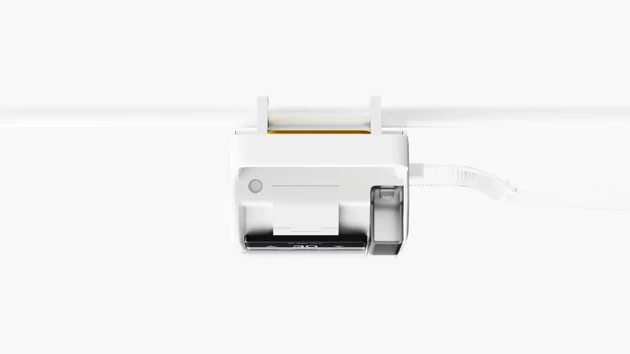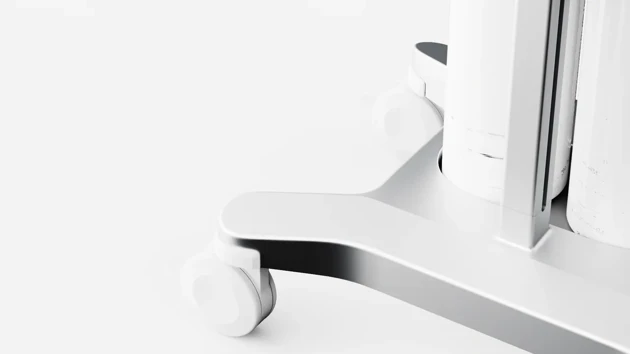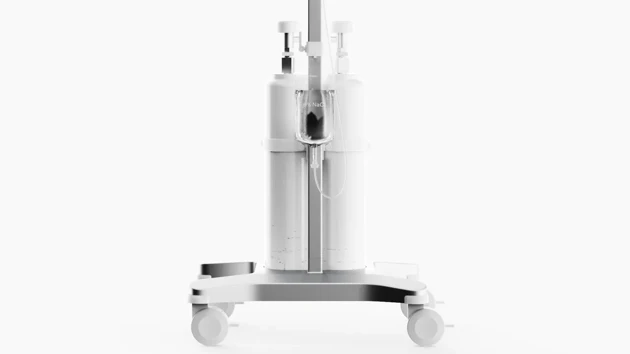Graphical representation of nasal cannula.
Safe transition from the ICU
High-flow therapy has gained significant presence in step-down hospital wards since the COVID-19 pandemic. This advanced respiratory support in step-down wards can alleviate the ICU by caring for patients who do not need ICU-level care. However, close monitoring is crucial as the risk of deterioration remains high. Step-down wards can receive critically ill patients who have only been stable in the ICU for between 2-4 hours, with 30-50% of these patients experiencing deterioration. This design project focuses on developing a new ventilator that enables precision closed-loop high-flow therapy based on the patient's vital signs to mitigate deterioration. With predictive trend analytics, nurses and physicians can stay informed of their patients' trajectories. The ventilator is intuitively designed for mobilization, allowing physiotherapists to help rebuild the patient's diaphragm strength during the transition to becoming ventilator-free.
SERVO-flow is designed through collaboration with Getinge and showcases a new ventilator that facilitates a seamless move from the ICU to a step-down ward. The overall ambition of the project is to create a solution that enables patients to receive the right care at the appropriate level within a hospital, ensuring a safe transition from the ICU.
The COVID-19 pandemic has accelerated the adoption of high-flow therapy outside of intensive care units (ICUs). High-flow therapy has proven effective in managing respiratory distress, reducing the need for intubation, and providing an intermediate level of care between standard oxygen therapy and mechanical ventilation.
Implementing advanced respiratory support in step-down wards can help reduce the load on ICUs by managing patients who do not require intensive care but still need more support than what is provided in general wards. This approach optimizes ICU resources, ensuring that critical care beds are available for the most severe cases.
However, step-down wards can receive critically ill patients who have been stable in the ICU for only 2-4 hours, with 30-50% of these patients experiencing deterioration. The high risk of deterioration among recently stabilized ICU patients underscores the need for advanced monitoring solutions to promptly detect and address any decline in patient condition.
The concept of a ventilator that adjusts therapy based on real-time patient data exists but can be further improved by analyzing multiple vital signs. These closed-loop systems can enhance patient outcomes by dynamically responding to changes in vital signs, thus potentially reducing the risk of deterioration.
The future hospital is a dynamic environment where patient mobilization is integrated at every ward level based on the patient's capabilities. Designing ventilators to support patient mobilization is crucial for recovery, particularly in rebuilding diaphragm strength and overall physical rehabilitation. Early and safe mobilization has been shown to improve outcomes and reduce the duration of mechanical ventilation.
In today's market, there is a mismatch between transport ventilators and those used in step-down wards. Physiotherapists need solutions that can be easily attached to walking aids, as the demand for mobilization is increasing and can outpace available staff.
To address this need, the ventilator must be designed with a package that enables easy and effective use in various mobilization scenarios.
In collaboration with:


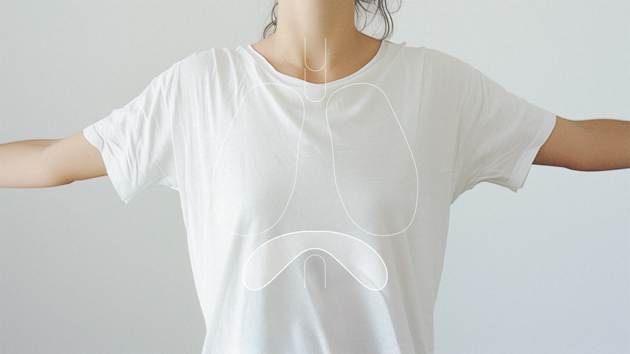
Graphical representation of diaphragm.
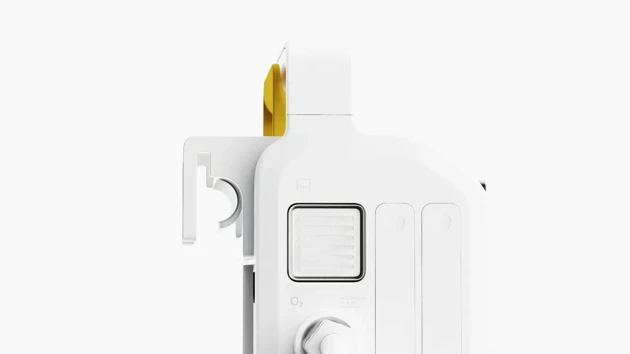
Hot-swappable batteries, air inlet with filter, and O2 inlet.
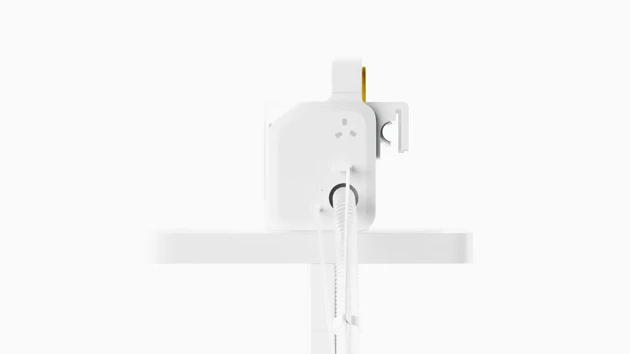
Sterile water inlet, inspiratory outlet & closed-loop monitoring connection.
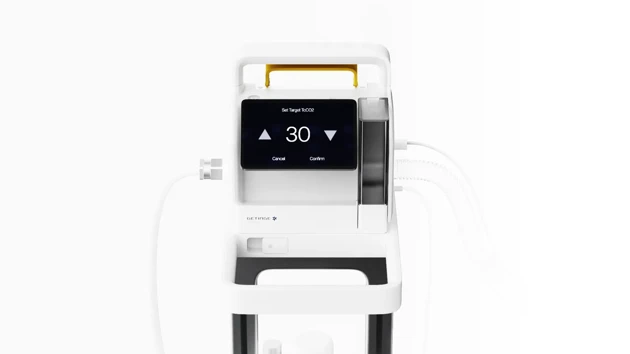
Adjustable display and integrated humidifier.
